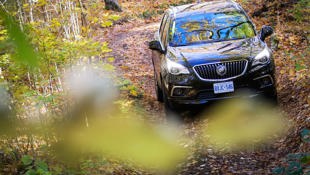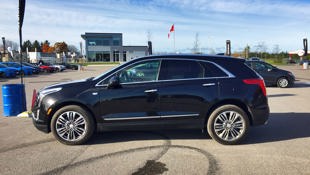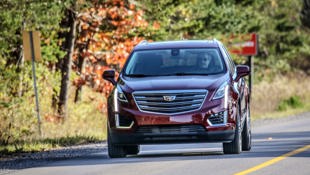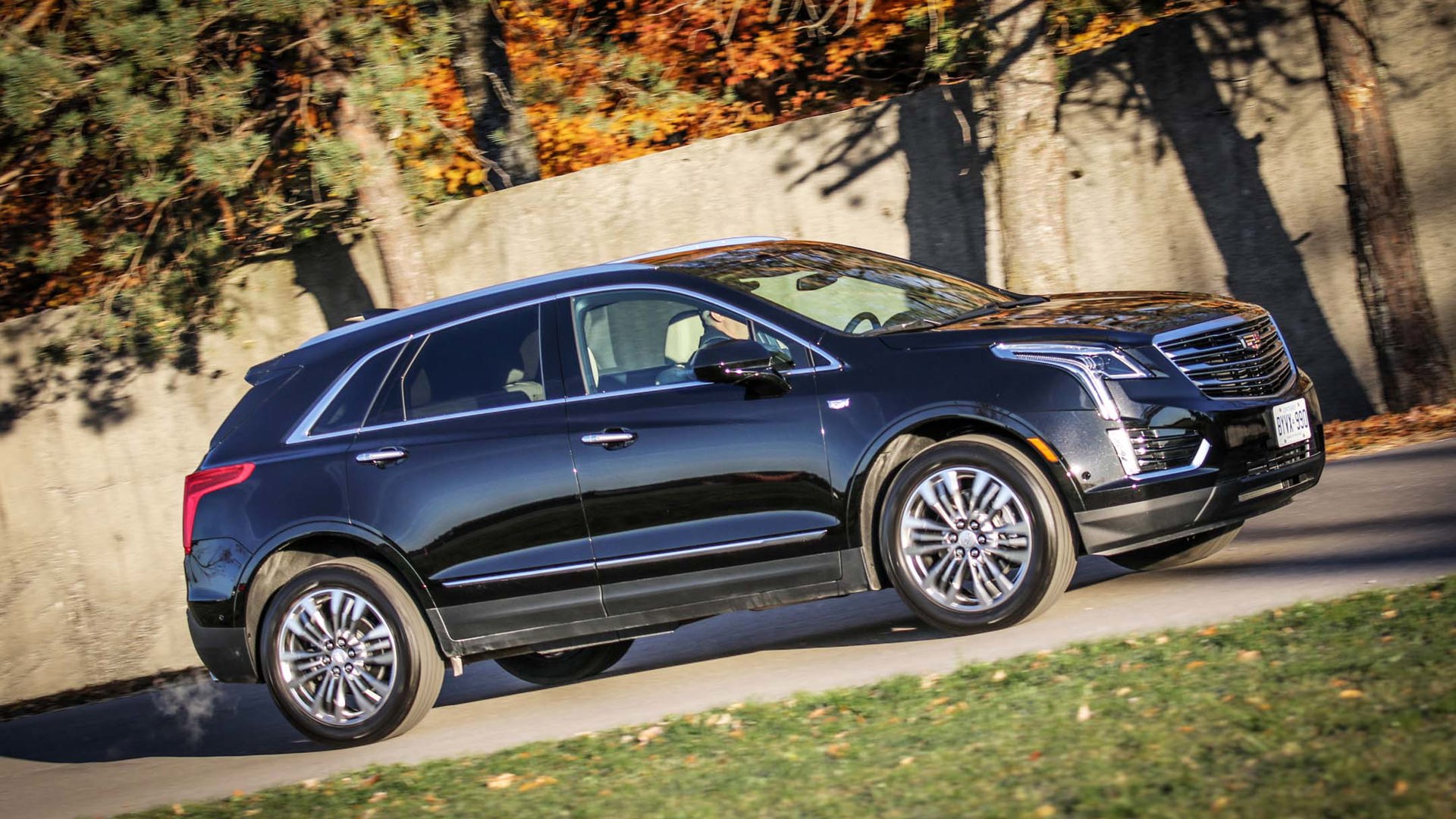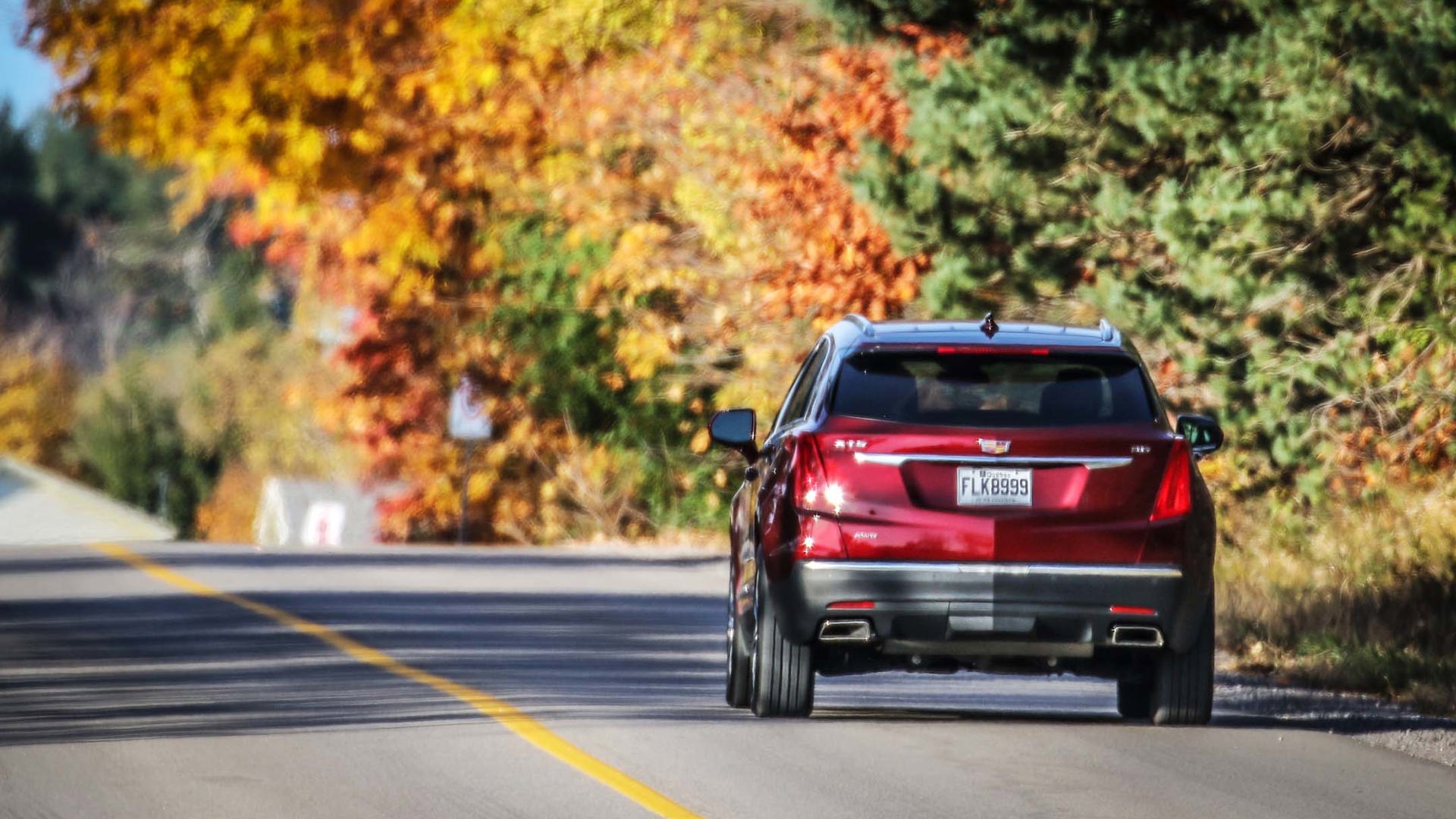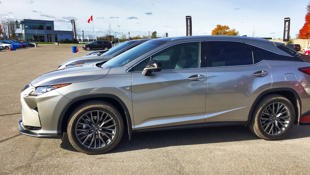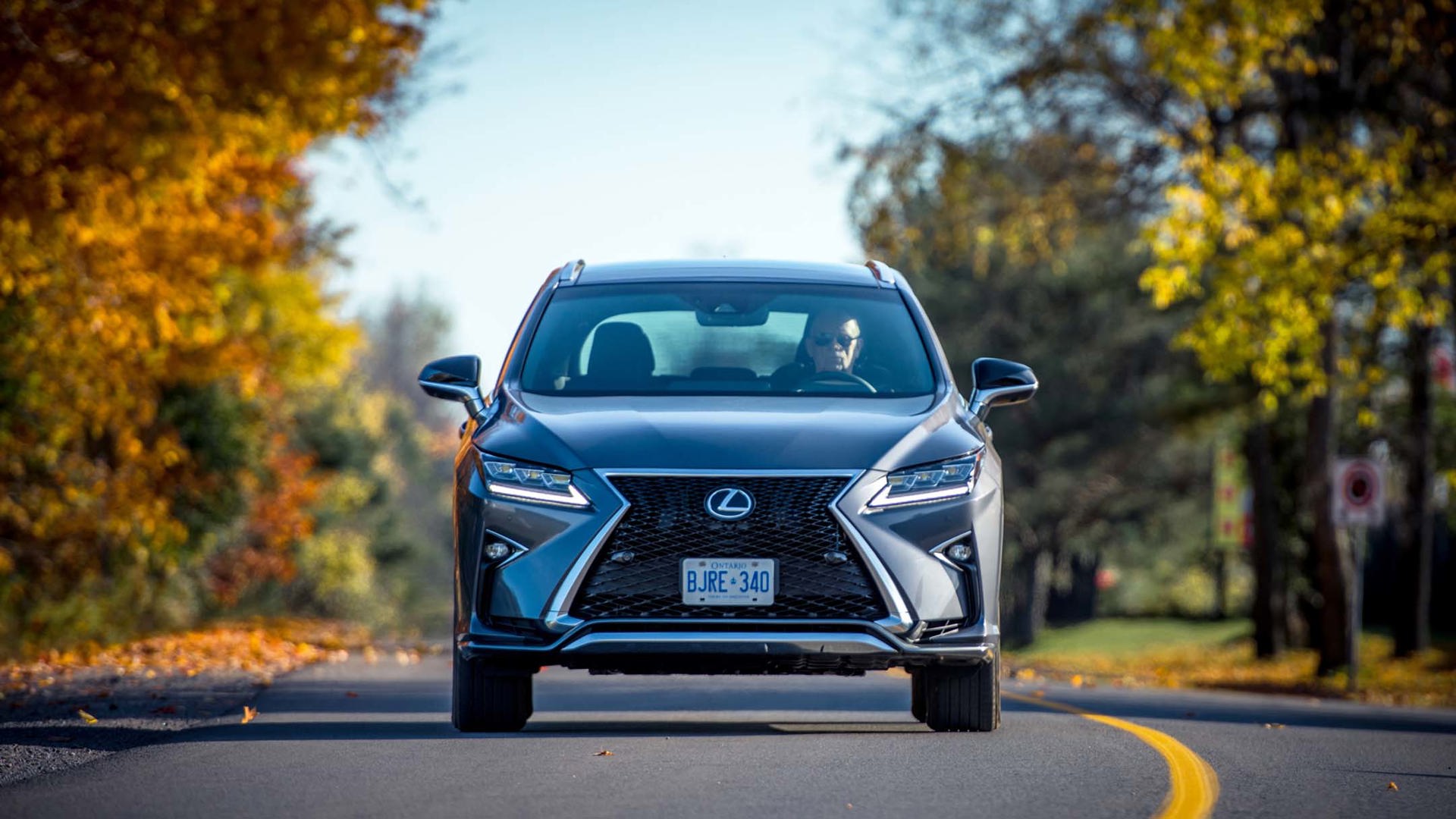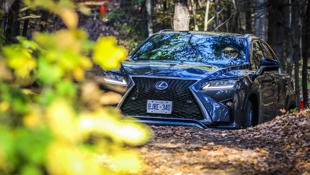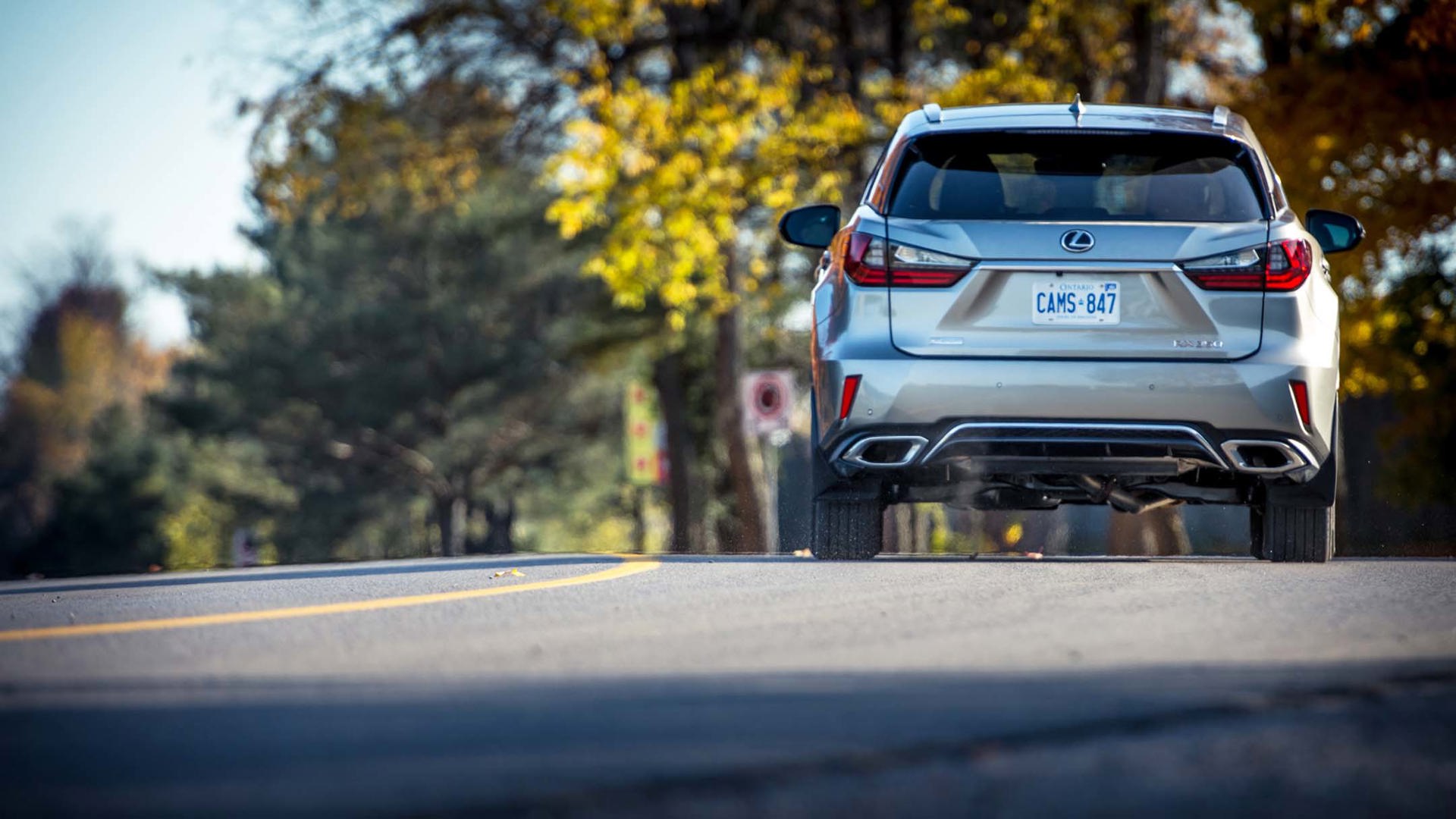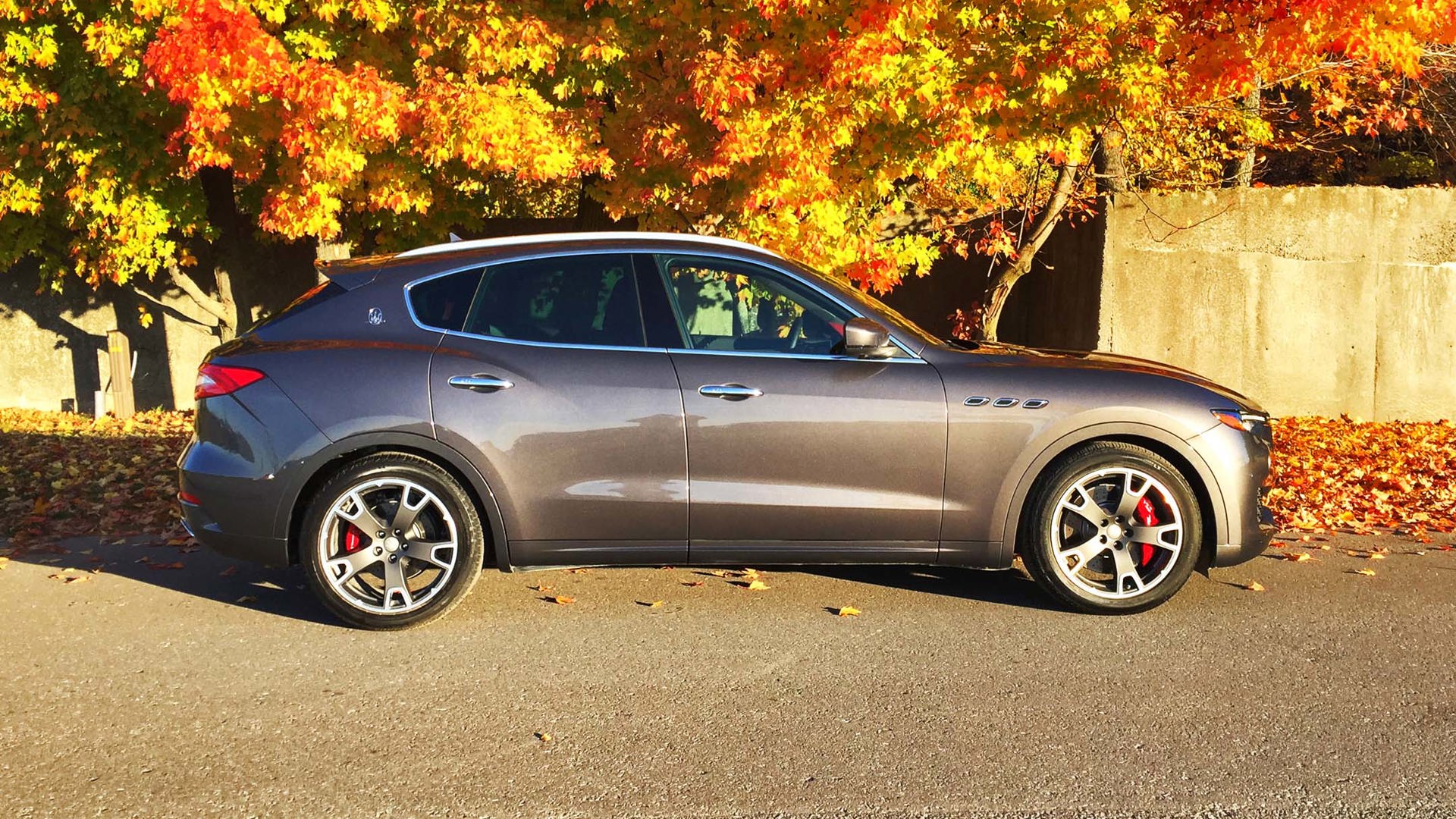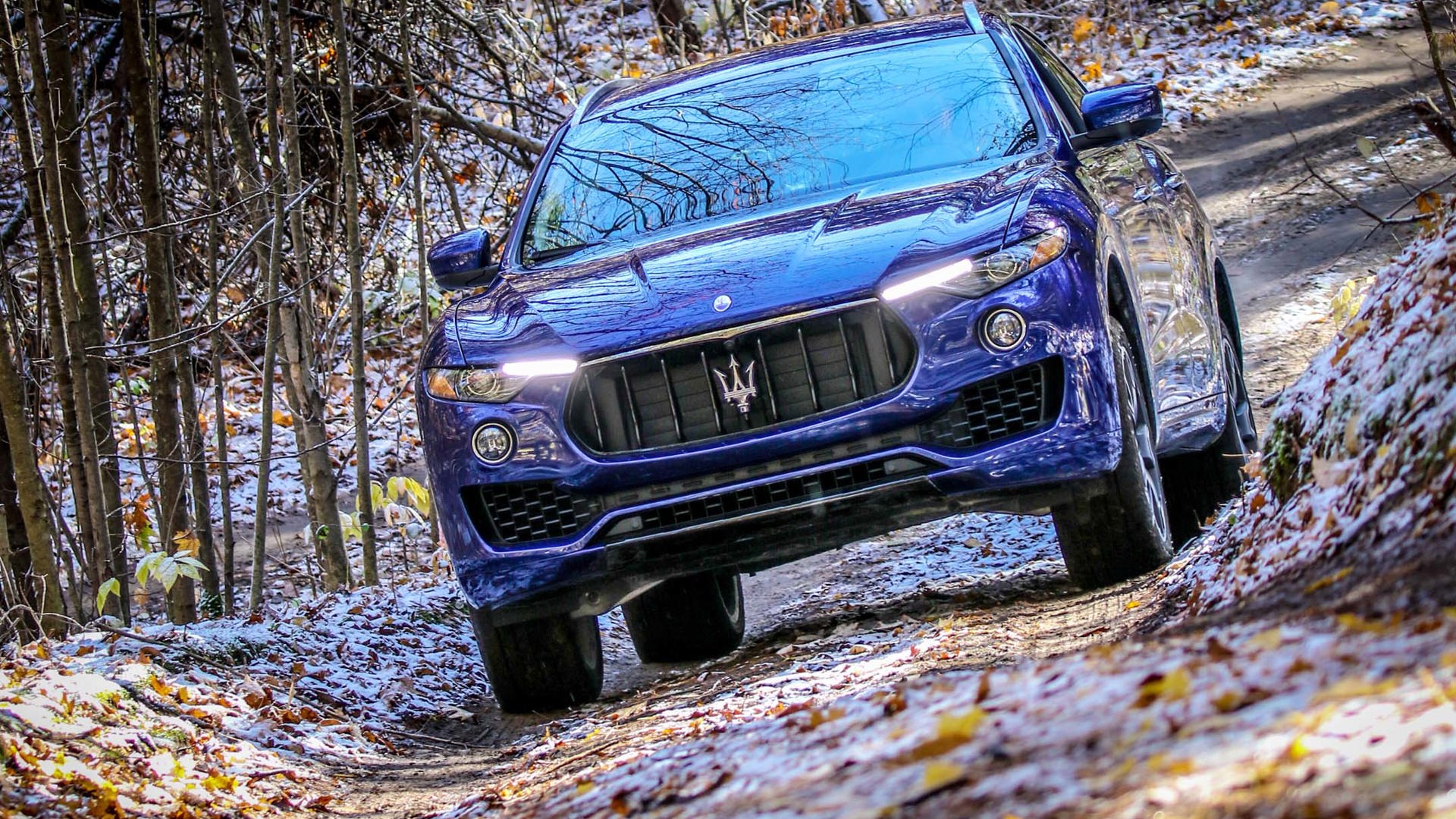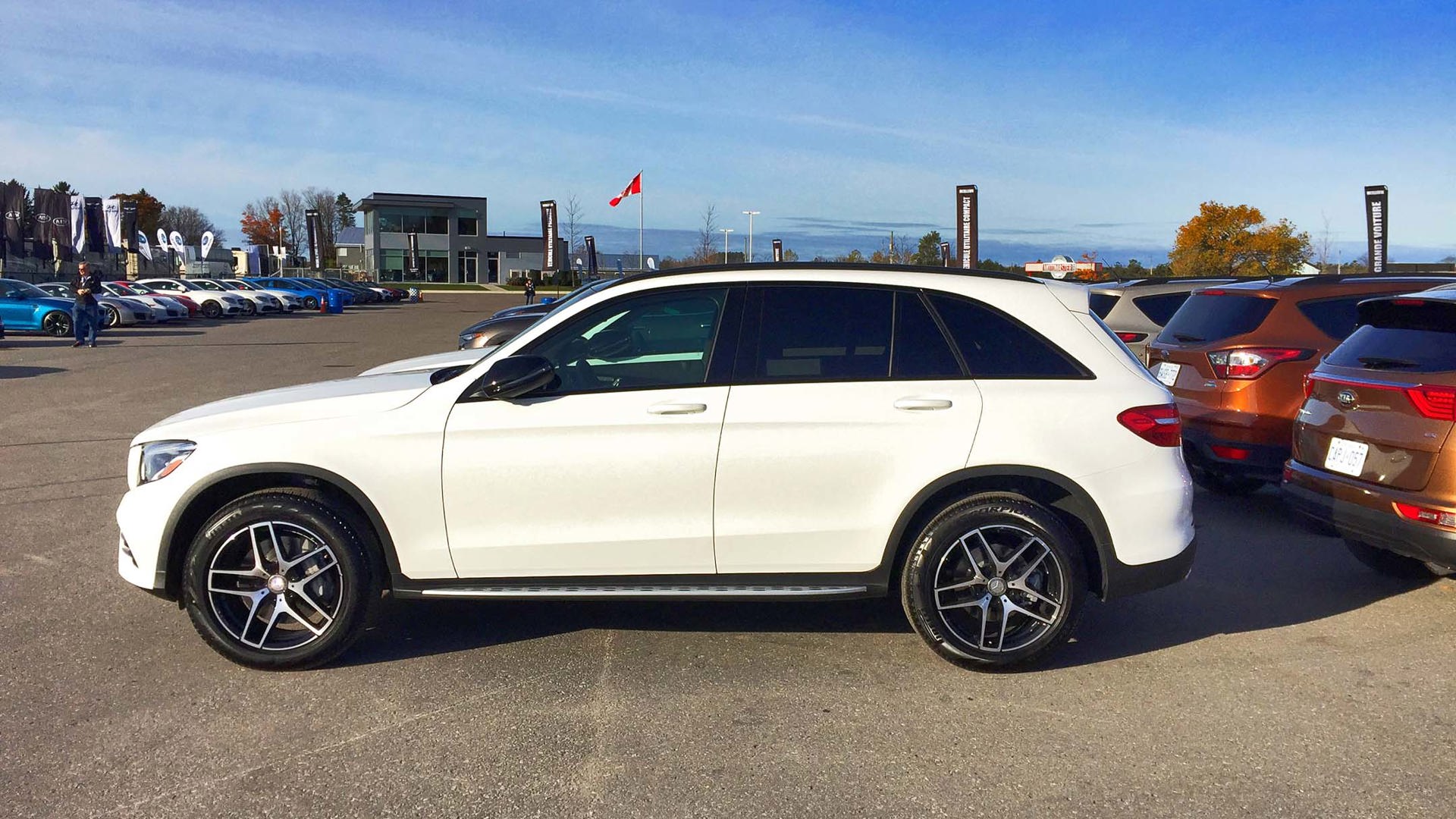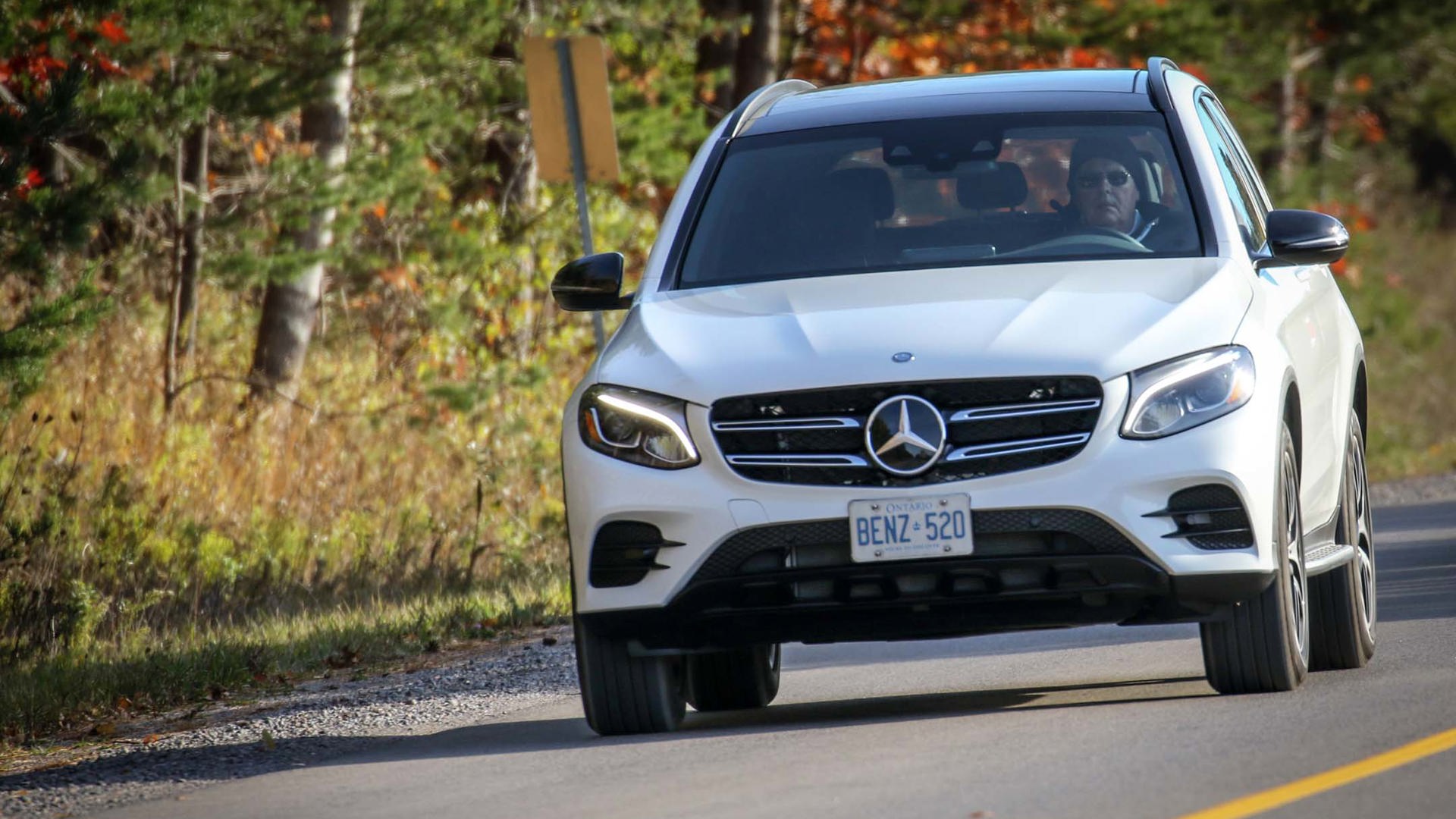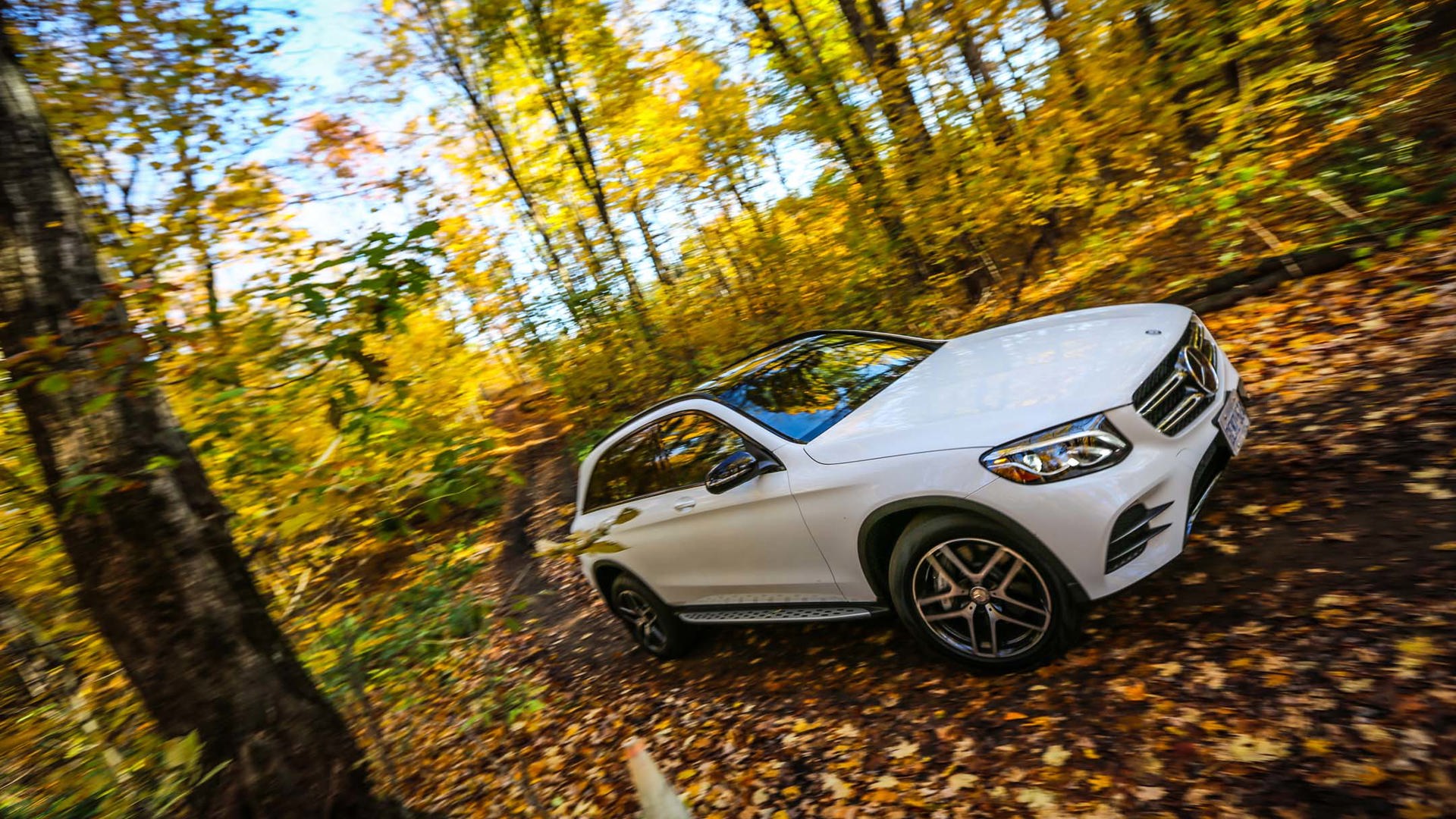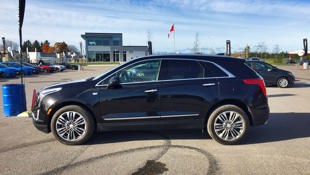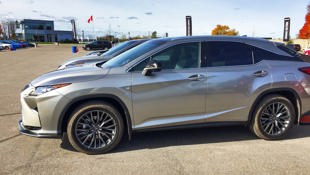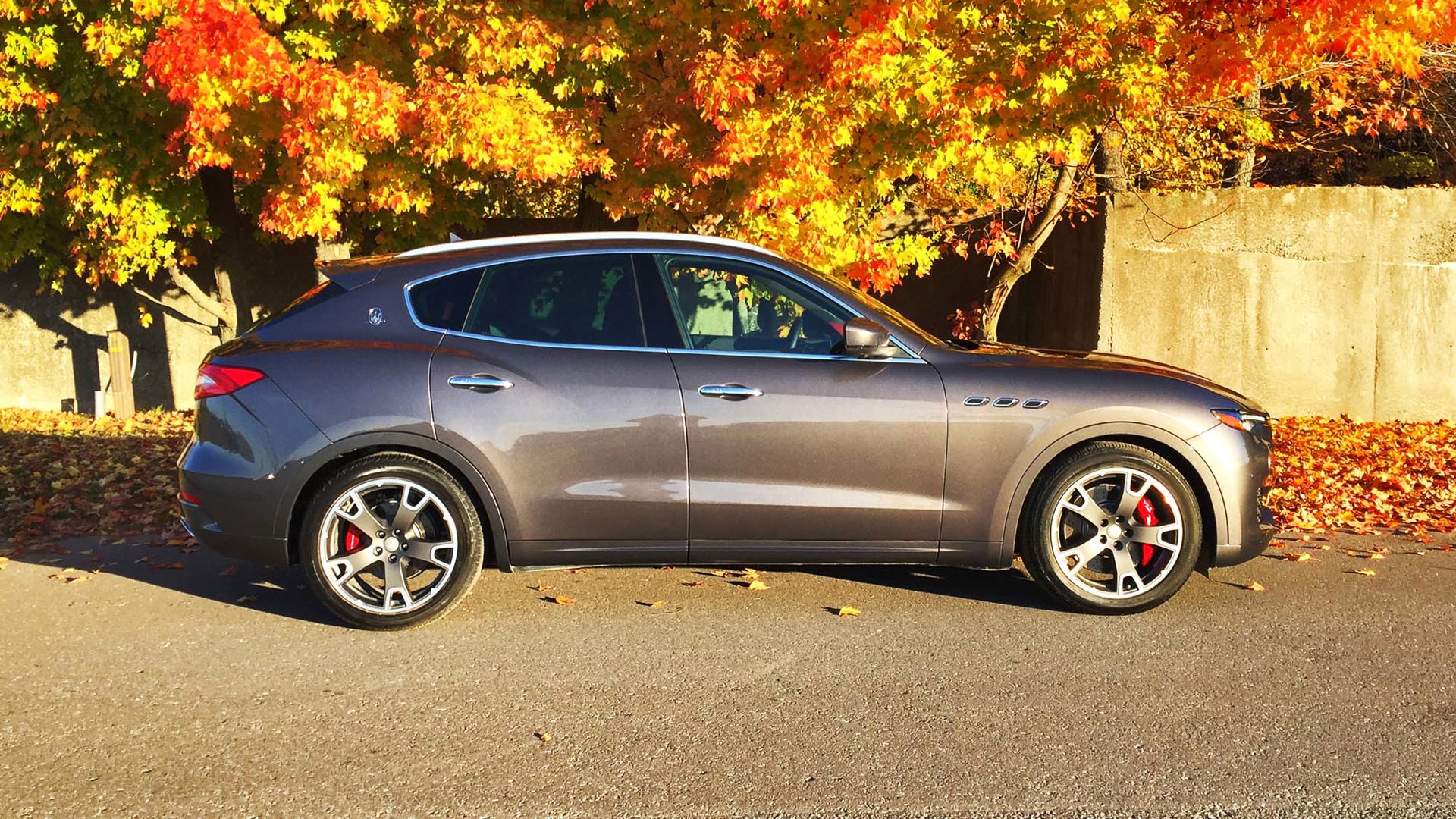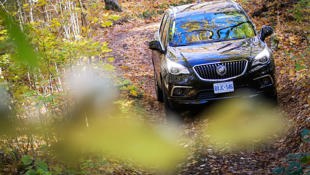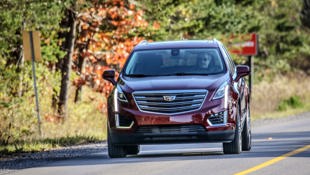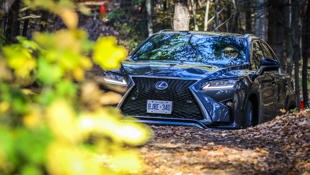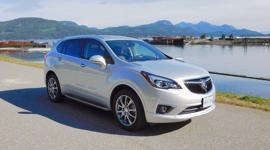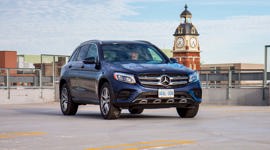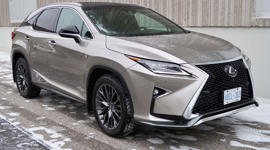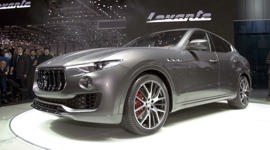Well folks, another year, another TestFest done (as we lovingly call the annual Canadian Car of the Year week of testing and evaluation).
In the Best New Premium Utility Vehicle pricing is all over the place.
Pricing is all over the place. The “budget” entry is the Buick Envision at $52,265 as tested. Next up is the 2017 Mercedes-Benz GLC300 4MATIC ($57,450), then the Cadillac XT5 ($61,865) and the Lexus RX350 (F Sport Series 3) ($69,250).
The Maserati Levante S sits at the top of the pricing food chain and is quite a jump – it rang in at $108,453 as tested. Yikes.
Careful consideration is given to each vehicle’s exterior styling, interior, technology, overall performance and the vehicle dynamics. When it came to the exterior styling, my absolute favourite was the all-new Maserati Levante. In a world of nearly identical crossovers, it was a stand-out. Heck, from a distance, you’d have a tough time telling three of the vehicles in this category apart – the Buick, Cadillac and Mercedes’ silhouettes will have you doing a double take to see which one is which. Not only that, but they’re all pretty sedate designs. That said, they are all nice-looking vehicles, but the Maserati really sets itself apart. It’s a stunner.
Once you get into each of these rides, you’ll see quite a difference in interior styling and ergonomics. Materials used are all nice, with plenty of nicely textured soft-touch plastics, stitched panels and leather to be found. But nothing can touch the Maserati’s sumptuous hand-stitched Rosso Red leather interior for sheer luxury. Each vehicle’s phone, navigation and entertainment functions are handled through a screen, and each system was (on the whole) useable and relatively straightforward. Stand-outs in the interiors were the 2017 Buick Envision’s excellent and clean Intellilink interface, the Lexus’ incredible 15-speaker Mark Levinson sound system, the Maserati’s steering wheel and stitched tridents on the headrests.
The driving evaluation starts with an off-road course. This course, built by professional off-roaders, presents the drivers with a series of drops, curves, different pitches and angles, off-set dips and variable surfaces – all of which challenge the vehicle’s all-wheel-drive system and electronics. While the off-road course isn’t extreme, it’s also more taxing terrain than 99 percent of these vehicles will see 99 percent of the time. The point is that if the vehicle can handle the off-road course we’ve built, it can easily handle what the typical consumer will throw at it when it comes to off-roading. And perhaps surprisingly, each of these competitors handled the course and came out of it unscathed. While each of the utility vehicles is all-wheel-drive, none of them are true off-roaders and so they all rely on electronics to conquer the obstacles and keep the driver out of trouble. The most capable in terms of getting through the course without any drama were the Lexus and the Maserati.
The Levante came equipped with two raised-height settings and hill-descent control – giving it an edge in electric trickery.
The Mercedes and the Cadillac XT5 did pretty well too, with the Buick bringing up the rear with a bit of struggle up an uneven and muddy pitch. Again, it’s unlikely a typical consumer will ever challenge one of these vehicles like this.
The rest of the evaluation is a drive route composed of gravel roads, paved country roads and highway travel. It’s a great insight into a vehicle’s capabilities and allows for brisk acceleration runs, throwing the vehicle into a few twists and turns, traveling at highway speeds and giving the brakes a run for their money.
All five of these utility vehicles are excellent on the road. They all rode nicely, and stayed comfortable and quiet. Handling was also exemplary for all of them – the fact that four out of five have variable or driver-selectable suspension (the Buick is the exception) helps. The Maserati felt the most car-like in terms of handling, and the Lexus was the most comfortable in terms of ride quality. Both of the GM products had a nice plush ride as well, while the Mercedes has a slightly firmer and more controlled Euro feel to it.
While none of these rides suffer from a shortage of power, the powertrains are as variable as the pricing. The Buick and the Mercedes get 2.0L turbo four-cylinders (with 252 and 241 hp respectively). The Lexus and Cadillac get normally aspirated V6s – Lexus’ 3.5 makes 295 hp and the Caddy’s 3.6 puts out 310. And Maserati, not content to fit in with the crowd, gives the Levante a lusty Ferrari-designed twin-turbo 3.0L V6 – it sends 424 hp to the ground and is the clear champ at the track, making the run to 100 km/h in 5.7 seconds. And it sounds absolutely fantastic!
I felt that all of the vehicles had reasonably good visibility and great brakes, although the Maserati’s six-piston Brembo brakes border on insanity (in a good way) and wouldn’t feel out of place on a sports car.
Alternatives
While these were the new models entered by manufacturers for 2017, should there be other vehicles that we compare to these? Of course! Competitors in this category aren’t immediately obvious as there are entrants from basically every manufacturer, and there are so many different sizes of utility vehicles and crossovers. Vehicles similar to this crop that should be considered competitors in my opinion are the BMW X3, Audi Q5 and 2017 Acura RDX. If you’re stepping up a size, the Acura MDX and Volvo’s XC90 should be on the list too.
In the end, consumers shopping in this category need to make up their own minds. In trying to help them with that decision, we think about what boxes a vehicle needs to check off for the buyer in order for them to plop down somewhere between $50,000 and $100,000 for one of these. Of course everyone’s needs and wants vary, but some safe assumptions would be as follows: comfort, safety, cargo space, technology. And none of these competitors falls short in any of these categories. Which leaves us with a decision: which one is the best? I always consider value for my money and predicted reliability when I make this kind of decision.
Tom’s Pick
My wallet loved the new kid on the block, the Buick Envision, and my heart would want the Maserati Levante. I believe all five of these vehicles have a place in the market though some will obviously sell much better than others. But at the end of the day, the best combination of performance on (and off) the road, comfort for driver and passengers, connected and safety technology that works and is not intrusive, spaciousness, (predicted) reliability and resale value is the Lexus RX350. And that’s where I’d be putting my money if I was shopping for a premium utility vehicle today. Although I would leave out most of the nearly $14,000 in as-tested options, which would allow me to get into the Lexus RX350 for under $56,000.
By the numbers
|
Model |
As-tested price |
Horsepower (hp @ rpm) |
Torque (lb-ft @ rpm) |
Transmission |
Fuel economy (L/100 km, cty/hwy/cmb) |
|---|---|---|---|---|---|
|
Buick Envision |
$52,265 |
252 @ 5,500 |
260 @ 2,000 |
6AT |
11.8/9.2/10.6 |
|
Cadillac XT5 |
$61,865 |
310 @ 6,600 |
271 @ 5,000 |
8AT |
12.9/8.9/11.1 |
|
Lexus RX350 |
$69,250 |
295 @ 6,300 |
267 @ 4,700 |
8AT |
12.2/9.0/10.8 |
|
Maserati Levante S |
$108,453 |
424 @ 5,750 |
428 @ 4,500 |
8AT |
16.8/12.4/14.7 |
|
Mercedes-Benz GLC300 4MATIC |
$57,450 |
241 @ 5,500 |
273 @ 1,300 |
9AT |
11.1/8.5/9.9 |


